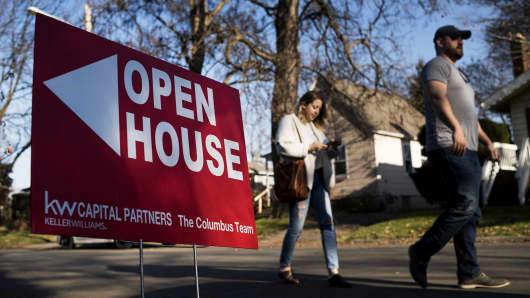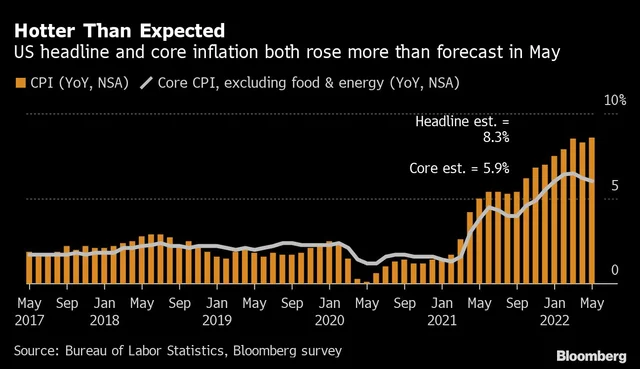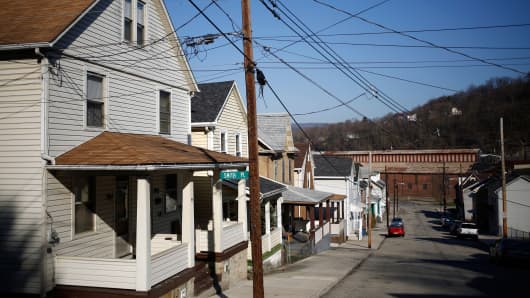
Ty Wright | Bloomberg | Getty Images
Potential home buyers walk past an 'Open
House' sign displayed in the front yard of a property for sale in
Columbus, Ohio, on Sunday, Dec. 3, 2017.
Pent-up demand from the holidays likely fueled the solid jump in mortgage applications last week.
Total application volume rose 8.3
percent during the first week of the year from the previous week, as
mortgage rates held below year-ago levels, according to the seasonally
adjusted Mortgage Bankers Association report.
Refinance
applications led the charge, rising 11 percent from the previous week.
Homeowners may be taking advantage of lower rates now, concerned that
rates will move higher this year. Rates were higher at the start of 2017
than they are now.
Homeowners also saw big gains in home equity last year and may be taking advantage of that in cash-out refinances.
The
average contract interest rate for 30-year fixed-rate mortgages with
conforming loan balances of $453,100 or less was basically unchanged
during the week, increasing just 1 basis point to 4.23 percent, with
points decreasing to 0.35 from 0.37, including the origination fee, for
80 percent loan-to-value ratio loans.
Economic news was mixed during the week, which kept interest rates in check.
"For
example, the ISM's nonmanufacturing index showed that growth in the
services sector was down for the second month, and the BLS' December
jobs report was weaker than expected," said Joel Kan, an MBA economist.
"However, these were partially offset by slightly stronger factory
orders for November and continued optimism of positive impacts from the
tax reform plan."
Homebuyers also came back to the market after
the holiday break. Mortgage applications to purchase a home rose 5
percent for the week but were 1 percent lower than the same week one
year ago.
"This was likely a catch-up week for potential borrowers as we head into the new year," Kan said.
Homebuyers
this year are facing a new landscape on the tax front. The Republican
tax plan reduced the deductions that homeowners can take for property
taxes and mortgage interest. In higher-priced housing markets and in
states with high property-tax rates, that makes homebuying more
expensive than it was just a few weeks ago.
Buyers are also
facing higher prices due to a severe lack of supply. More homes should
begin to come on the market this month and next, with sellers hoping to
get the jump on the spring market, especially those who are selling in
order to buy another home. Unfortunately for buyers, there is so much
demand for housing right now that any new supply will likely be
swallowed up quickly with competition and prices remaining high.
Robert Bobby Darvish Platinum Lending Solutions Orange County california





